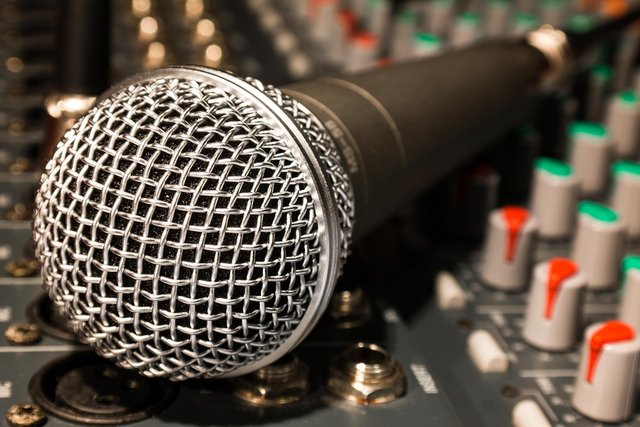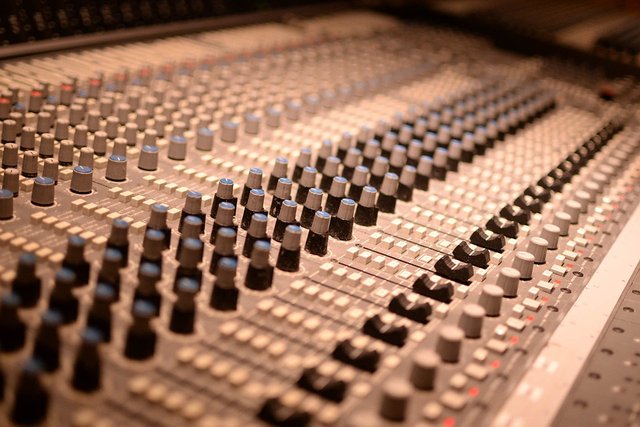Power Amplifier

pixabay
A power amplifier is a component in the signal processor chain, whose function is to increase the level of the signal as indicated by its name. In a sound system, it is the last active component of the chain, located just before the speakers.
In other words, power amplifiers are those which, in addition to supplying a higher voltage, also supply a higher current (voltage amplification and current amplification and therefore power amplification).
We can, according to this, have: voltage amplifiers (for both B.F. and R.F.) and power amplifiers (also for both frequency ranges).
The function of the amplifier is to increase the level of a signal by increasing the amplitude of the input signal through polarization currents (negative voltage, positive voltage) in the output transistor.
The amplifier needs a transformer, because it works internally with direct current.
When designing an amplifier, ventilation of the amplifier is essential. Therefore, we will always find ventilation grilles and manufacturers will have installed fans inside (like on the computer). This is because during the amplification process, a large amount of heat is dissipated inside the amplifier.
Physically, when we look at an amplifier, we find a device where there is usually only one button: the power to plug it in or out.
On the back side, however, is the panel with the corresponding inputs and outputs that will depend on the amount of signals that a given amplifier model can support.
Technical characteristics
The technical characteristics of each model will determine the quality of the amplifier:
- Impedance.
- Damping factor.
- Output power.
- Signal-to-noise ratio.
- Coupling.
- Frequency response.
- Phase response.
- Profit.
- Sensitivity.
- Distortion.
- Crosstalk.

pixabay
Impedance
Impedance is the resistance (opposition) of any device to the passage of an alternating current.
The input impedance of an amplifier must be at least 10 kΩ These 10 kΩ are given so that in the case of positioning 10 amplifiers in parallel the total load is one kΩ. (10 kΩ / 10 = 1 kΩ)
Damping factor
Indicates the ratio between the nominal impedance of the loudspeaker to be connected and the output impedance of the amplifier (the electrical impedance actually present at its output).
The higher the damping factor the better, but above two hundred, can mean that the amplifier is poorly protected against reactive loads that can damage it.
The damping factor is expressed as: 200 over 8 Ω, which would mean that the actual output impedance of the amplifier is 0.04 Ω (8/200).
Many manufacturers include the bass damping factor, which is very useful, because we know that's the critical frequency response. It would be indicated as 150 on 8 Ω at 40 Hz.
Power output
It refers to the electrical power, not to be confused with the acoustic power.
Like the speaker, it is the amount of energy that can be introduced into the power amplifier before it becomes over-distorted or damaged.
The maximum power of the amplifier is specified as a function of a given impedance, generally Ω For example: 175 W on 8 Ω).
If the amplifier is stereo, consider whether this power refers to each or both of the channels. Therefore, one of these two indications is added to the technical specifications:
- with the two channels fed.
- per channel.
In the example above with an output power of 175 W on 8 Ω, if added with the two channels supplied it means that the power per channel will be half (87.5 W on 8 Ω).
On the other hand, with an output power of 175 watts over 8 ohms per channel, we will have 350 W over 8 Ω with both channels powered.
In equipment that allows the input impedance to be modified, it is also necessary to take into account the modifications that varying this parameter makes to the power. In this case, close approximations are made, they are never absolute, because, in the current state of the amplifiers, this is not possible. Thus, if we have an amplifier in which the technical specifications state 175 W on 8 Ω, if we reduce the impedance to 4 Ω, the power will be close to double, the 350 W (in an ideal amplifier, it should be exactly these 350 W).
Within the power there is a difference between nominal and peak power.
Maximum power
Maximum effective power, or mean power at continuous operation, is the actual electrical power verifiable with instruments that the output stage can provide for one minute at a frequency of 1 kHz (kilo hertz) above the nominal impedance specified by the manufacturer (normally 4, 6 or 8 Ohms) and is given by the expression Po= Vo(rms)²/Zo. Where:
Po is the output power.
Vo is the effective output voltage (electrical voltage).
Zo is the nominal impedance of the amplifier
Note: Pure resistance is used to measure power, as a complex impedance alters the performance of the amplifier.
Maximum useful power
The effective power is limited by the distortion of the equipment, since it grows with the power, so that the useful power is specified at a level of nominal distortion, such as 1, 2 or 5% (10% in low quality amplifiers) or less than 0.25% in other high quality, this measure is lower than the previous one.
Peak power, permissible or musical
Maximum impulse power (one signal peak'), which the amplifier can withstand from time to time before it deteriorates.
Some manufacturers, instead of specifying the nominal power, specify the peak power, to make up the amplifier range, as the peak power is always higher than the nominal power. Be alert to this detail and bear in mind that the peak power of an amplifier is 1.41422 times its nominal value.
Signal-to-Noise Ratio
Refers to the residual noise voltage at the output and is expressed in dB.
For the signal-to-noise ratio to be below the hearing threshold, it must be at least 100 dB. Higher, 110 dB, for high power amplifiers (above 200 watts).
Coupling
Indicates how the amplifier is connected to the speaker. There can be several modes:
- "Direct coupling", when both are directly coupled. This allows the best frequency response and the highest performance in terms of power delivered to the load.
- Inductive coupling", when the amplifier and its load are coupled by means of a transformer.
- Capacitive coupling", if the coupling is made by means of capacitors.
Internally, the amplifier operates with direct voltage, but at the output it converts the signal into alternating current. When directly connecting an amplifier to the loudspeaker, this direct coupling should be done in such a way that the DC residual current (DC offset) is as low as possible, not exceeding 40 millivolts. (The most common are at 15 millivolts).
Frequency Response
Calculates the limit within which the amplifier responds equally (flat response) to audio frequencies (20 to 20,000 Hz) at very low power.
The frequency response in amplifiers is measured in dB against a power of 1 watt with an impedance of 8 ohms. For optimum frequency response, it should be about 5 dB above (+5 dB) or below (-5 dB).
Many manufacturers, instead of using audio frequencies alone, to protect amplifiers from suprasonic or subsonic disturbances, measure the frequency response for a higher frequency band (usually 12 to 40,000 Hz). In this case an optimal frequency response should be around 3 dB above (+3 dB) or below (-3 dB).
Phase response
Indicates the phase relationship between the mid frequencies with respect to the high or low frequencies. This phase shift (overtaking or delay) in the audio frequency spectrum (20 - 20,000 Hz) should not exceed 15°, so that no distortion or cancellation of the signal occurs.
There are certain models of amplifiers that invert the phase in all its pass band, which can cause difficulties in its operation (if we don't have it present we can be canceling the whole signal).
Hello @jesusjacr, thank you for sharing this creative work! We just stopped by to say that you've been upvoted by the @creativecrypto magazine. The Creative Crypto is all about art on the blockchain and learning from creatives like you. Looking forward to crossing paths again soon. Steem on!
Wao. Thank you so much sr. God bless you!